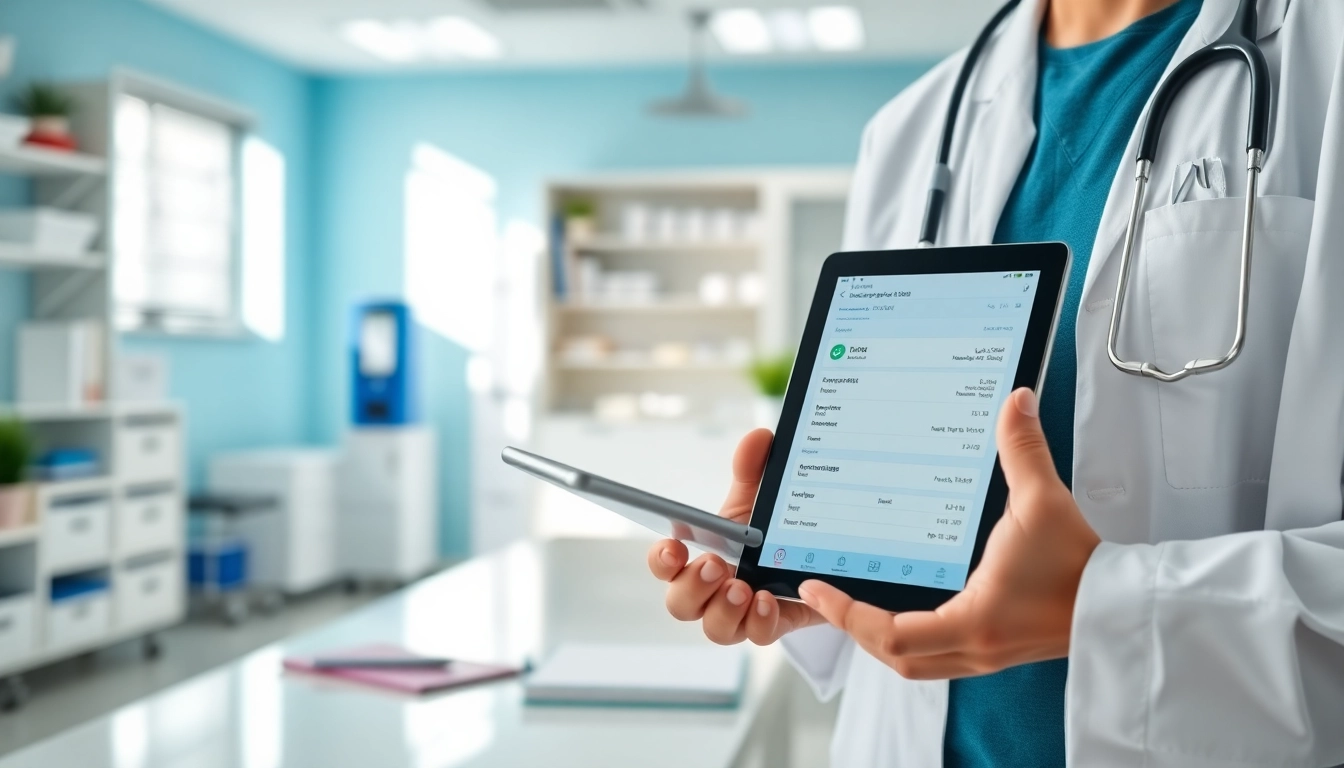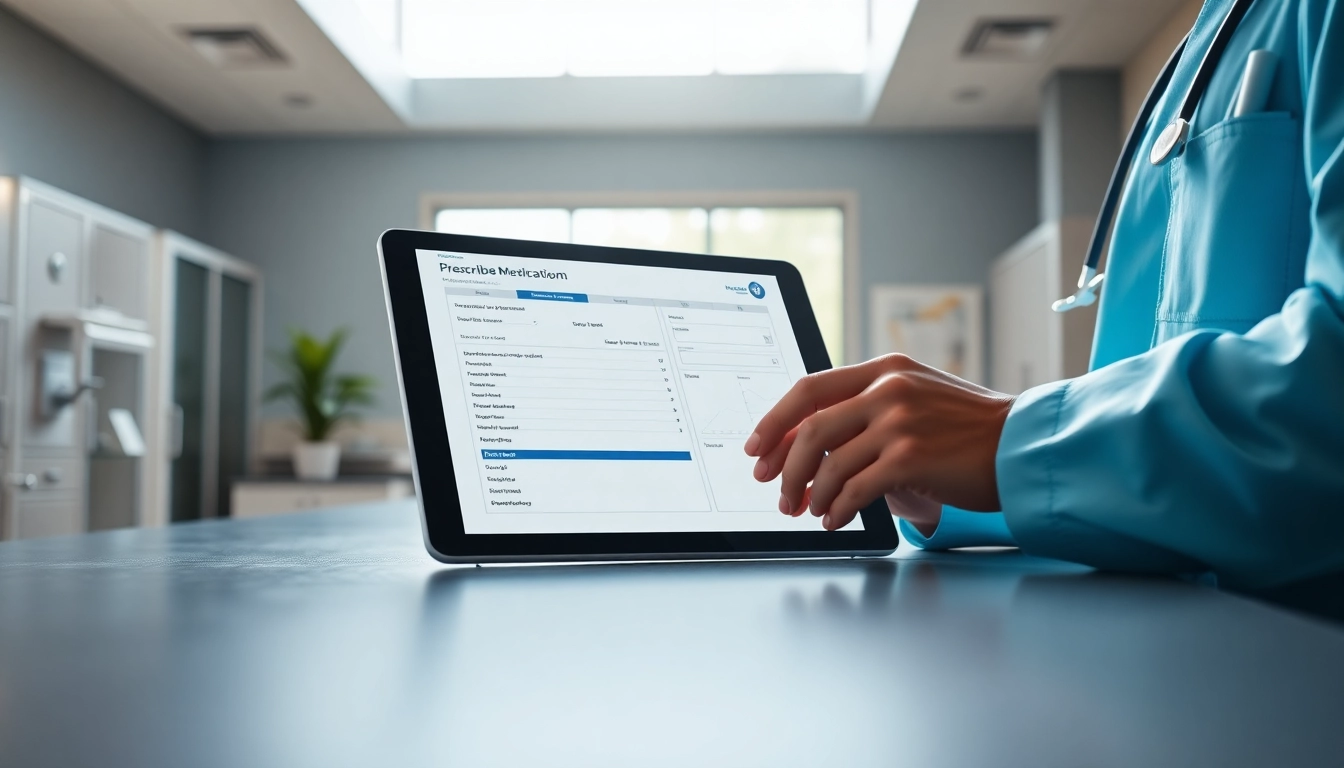
Understanding Free Eprescription Apps
What are Free Eprescription Apps?
Free e-prescription apps are digital platforms designed to facilitate the process of prescribing medications electronically. These applications enable healthcare professionals to generate, transmit, and manage prescriptions digitally, streamlining the workflow significantly compared to traditional methods. Incorporating technology into prescribing practices leads to improved efficiency, reduced errors, and enhanced patient safety. As a practitioner, leveraging free eprescription apps can transform how you interact with pharmacies and patients, ultimately elevating care quality.
How Free Eprescription Apps Work
Free e-prescription apps utilize a straightforward interface that allows healthcare providers to enter patient information, select prescribed medications, and transmit prescriptions directly to pharmacies with the click of a button. This process eliminates the need for handwritten notes, which can be susceptible to misinterpretation, ensuring accuracy in medication delivery.
When a physician decides to issue a prescription using an e-prescribing app, they must input essential information such as:
- Patient’s identity and medical history
- Details of the medication, including dosage and quantity
- Pharmacy details for prescription delivery
Once the details are confirmed, the app generates an electronic prescription that is securely transmitted to the selected pharmacy. This method of communication is not only faster but also minimizes potential errors that can arise during verbal or handwritten prescriptions.
Benefits of Using Free Eprescription Apps
The advantages of utilizing free e-prescription apps extend beyond mere convenience. Healthcare providers can experience numerous improvements, including:
- Time Efficiency: Reducing the administrative burden allows practitioners to dedicate more time to patient care and less to paperwork.
- Enhanced Accuracy: Automated prescribing reduces the likelihood of errors caused by misreading handwriting or miscommunication.
- Streamlined Workflow: Integrates seamlessly with Electronic Health Records (EHR), ensuring that all patient data is synchronized.
- Analytics and Reporting: Many apps come with built-in analytics tools that allow healthcare providers to monitor prescription patterns and outcomes over time.
- Improved Patient Safety: The systems often check for drug interactions and allergies, enhancing patient safety in pharmacotherapy.
Key Features to Look for in Free Eprescription Apps
Prescription Management Capabilities
When selecting a free e-prescription app, effective prescription management capabilities should be at the forefront of considerations. These features enable healthcare providers to create, modify, and manage prescriptions with ease. Look for apps that allow tracking of prescription status, refill requests, and management of medication histories.
User-Friendly Interface
A clean, intuitive interface is crucial for maximizing the efficiency of e-prescribing. An app should be easy to navigate, minimizing the learning curve for new users. Features such as search functions, customizable menus, and quick access to frequently prescribed medications can significantly enhance usability.
Integration with Other Healthcare Systems
Integration capabilities with existing healthcare software like Electronic Health Records (EHR) systems are essential. This integration allows for automatic updates to patient records, ensuring that all information is current and accurate. Furthermore, it aids in coordinating care among healthcare providers, promoting better health outcomes.
Evaluating Security and Compliance in Free Eprescription Apps
Data Protection Standards
Security is non-negotiable in healthcare technologies, particularly concerning patient data. Ensure that the e-prescription app adheres to stringent data protection standards, employing encryption and secure data storage protocols. Regular audits and compliance checks are necessary to maintain data integrity and confidentiality.
HIPAA Compliance Factors
The Health Insurance Portability and Accountability Act (HIPAA) sets the standard for protecting sensitive patient information in the United States. Any free e-prescription app you consider should be fully HIPAA-compliant, employing measures to protect patient data from unauthorized access or breaches.
User Authentication Processes
Robust user authentication processes are vital for ensuring that only authorized personnel can access sensitive patient information. Look for apps that utilize multi-factor authentication (MFA) to enhance security protocols when logging into the system.
Best Practices for Implementing Free Eprescription Apps
Training Your Staff
Proper training for your staff is crucial when introducing free e-prescription apps into your practice. Training sessions should cover app functionality, security protocols, and troubleshooting common issues. Continuous training updates will help staff members stay informed about new features or changes in procedures.
Monitoring Usage and Feedback
After implementation, it is essential to monitor the usage of the e-prescribing app actively. Gathering feedback from users on their experience and any challenges faced can guide future adjustments and improvements. Regular reviews of the app’s performance and its impact on workflow can help identify areas for enhancement.
Regular Updates and Maintenance
Technology is ever-evolving, making it imperative that your e-prescribing app receives regular updates and maintenance. Keeping the application up to date ensures compatibility with new systems and security requirements while addressing any bugs or performance issues that may arise.
Future Trends in Free Eprescription Apps
Integration with Telehealth Services
The convergence of e-prescribing and telehealth services is on the rise, as healthcare professionals increasingly adopt remote patient consultations. The integration of telehealth capabilities into e-prescribing apps will enable providers to manage prescriptions efficiently during virtual visits, enhancing the overall patient experience.
Artificial Intelligence Enhancements
Artificial intelligence (AI) has the potential to revolutionize e-prescribing by providing personalized recommendations based on patient histories and trends. Advanced AI algorithms can analyze patient data to predict which medications may be most effective, enhancing treatment outcomes while minimizing side effects.
Personalization and Patient Engagement Features
Future apps will likely enhance personalization features to engage patients better in their treatment plans. Providing educational resources, reminders, and follow-up notifications will empower patients to take an active role in their health, fostering adherence to prescribed therapies.







